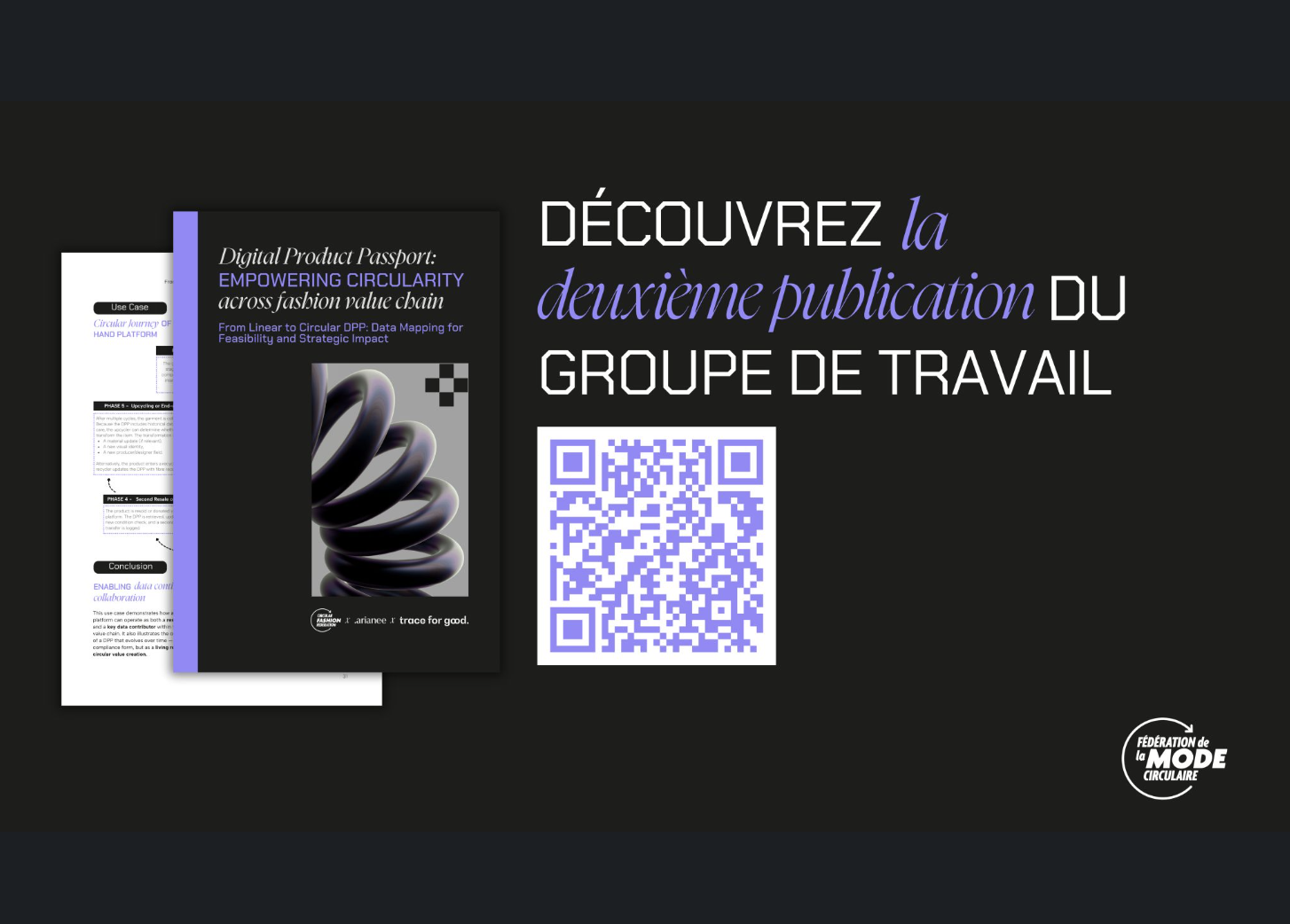From Linear to Circular DPP: Data Mapping for Feasibility and Strategic Impact
This report explores how Digital Product Passports can be designed to support circular business models in fashion—without increasing complexity. Co-authored by Circular Fashion Federation, Arianee, and Trace For Good, the paper offers a field-based data framework, stakeholder mapping, and actionable KPIs. Learn how circular DPPs unlock strategic value, regulatory readiness, and ecosystem collaboration.


90% of the circular DPP data is already available: Circular DPPs are not more complex—they're already technically feasible within existing data systems.
Every actor in the value chain plays a role: This paper maps out who provides which data, at what stage of the product lifecycle, and for what purpose—from brands to second-hand platforms, recyclers, and upcyclers.
The DPP evolves with the product: Unlike a static compliance tool, the circular DPP allows for continuous updates over time—capturing resale, repairs, transformations, and end-of-life actions—turning it into a living record of circular value creation.
KPIs to track and scale circularity: This report highlights actionable indicators for brands, investors, and policymakers: EPR-related cost savings, access to green financing, resale market performance, and product-level circularity tracking.


To anticipate upcoming regulatory requirements (ESPR): This deliverable provides a practical and operational framework to prepare for the future implementation of the Digital Product Passport under the European Ecodesign Regulation.
To support strategic decision-making around circularity: It shows how a well-designed DPP can become a lever for consumer trust, service innovation, financial incentives, and sustainable differentiation.
To access a unique, field-tested DPP data reference table: Co-developed with industry experts, the document includes a comprehensive data matrix tailored to different circular product typologies, helping stakeholders structure their DPPs effectively.
To explore concrete use cases and real-world applications: The paper features personas, lifecycle scenarios, and operational examples that demonstrate how circular DPPs can work in resale, repair, refurbishment, and upcycling flows.














